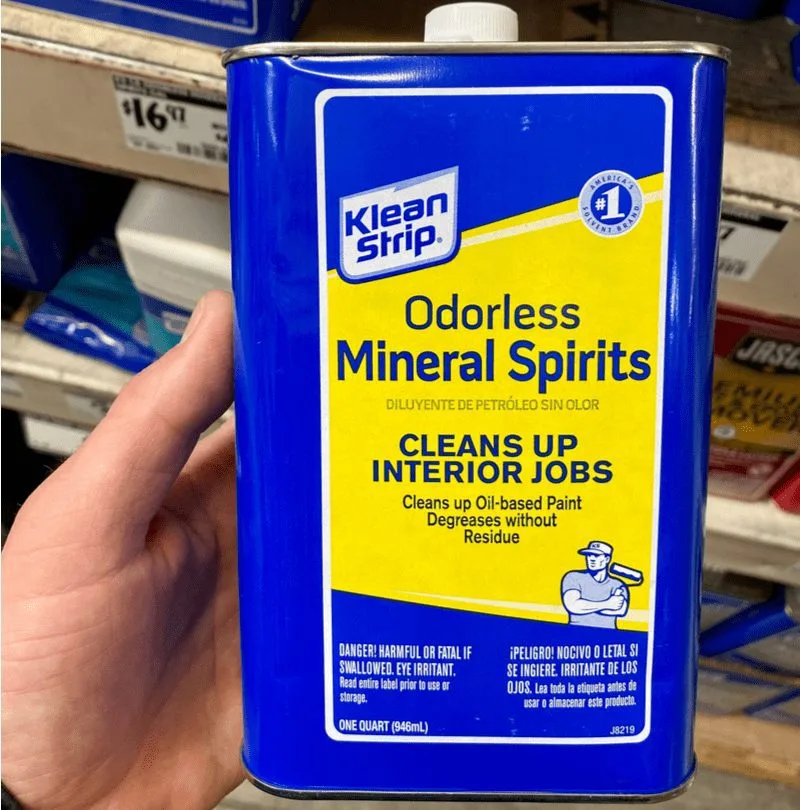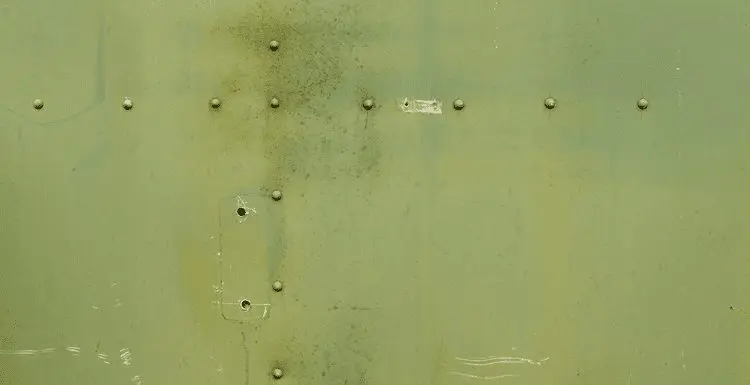If you’ve ever tried to remove paint from metal, chances are it didn’t go well.
But don’t worry—in this guide, we’ll show you how to remove paint from metal with supplies that you can find at your local hardware store.
Summary of Steps

ZikG/Shutterstock
While it’s not complicated, removing paint from metal requires some steps to get right. In short, these are as follows:
- Get your work area ready
- Gather all the right protective gear
- Apply your paint stripper
- Clean off any residual paint stripper
- Apply mineral spirits to the stripped metal
- Do a final cleaning
Want more than just the cliffnotes? Then read on.
How to Remove Paint from Metal in 6 Steps
Removing paint from metal isn’t easy, but it’s also not impossible. Let’s take an in-depth look at six steps that will remove the paint and leave your metal looking new.
Step 1: Get Your Work Area Ready
First off, you have to set up your work area to ensure that you don’t get the paint stripper anywhere else. In this case, a garage or shop works best for most people (depending on what kind of stripper you are using).
If you’ve set up your workstation outside, you’ll want to make sure that you keep kids and pets away from the area and any chemicals that you’ll be using.
Get your basic workbench out and cover it with some newspaper or plastic sheeting. This will keep the solution from ruining your furniture or any other surface that you’re using.
When working in a garage, also make sure that there is enough ventilation so it doesn’t create a hazard while you’re stripping paint off of metal. Chemical fumes can be deadly.
Step 2: Gather Protective Gear
In addition to setting up your workspace, make sure you are protected against any accidental contact with the solution. You’ll need heavy gloves (typically rubber), long sleeves, and eye protection.
You don’t want to get any of the paint stripper on you, so this is important! I prefer safety goggles as they are easy to put on and take off and do a great job of protecting my eyes against any type of accidental splash.
Plus, you can pick up safety goggles relatively cheaply at any local hardware store or big-box retailer near your home.
We also highly suggest using a face mask. You should always use one when working with chemicals and loose particles.
Step 3: Apply Your Paint Stripper
Now you’re ready to apply the solution that’s going to remove all that paint from the metal. Paint strippers come in all shapes and sizes.
But regardless of what type you choose, apply the product to the surface using a brush, roller, or by pouring a small amount of it directly onto the metal.
Take your time when applying so that there’s an even coat of paint stripper over the entire piece. If necessary, use masking tape to cover surfaces or areas you don’t want to be exposed to the stripping solution.
After you’ve applied your paint stripper, it’s time for some waiting around! Depending on how much paint was covering your metal products and how thick that layer was, you might have to wait a while.
You’ll be able to tell it’s working when the paint starts bubbling and peeling off, letting you know that it’s time to move on to the next step.
After your paint has begun to bubble and peel away from the surface, take an old toothbrush or scrub brush dipped in a solution of water and soap and scrub down all of the affected areas.
This will remove all loose paint and prep the metal for re-priming if that’s what you want to do.
Step 4: Clean Off the Residue
Wash off the metal to remove any remaining paint or residue. You can also use some non-abrasive metal cleaner if you feel that the water isn’t going to clean it enough for your liking.
If you still have paint on your metal, you’ll have to repeat the previous process to make sure you get it as clean as you want.
We think it’s best to remove all visible paint. This ensures your paint has a clean surface on which to bond.
Step 5: Apply Mineral Spirits
Once all of the painting and stripping have been done, you may want to consider using a solvent such as mineral spirits to dissolve any remaining paint that may be on the metal surface.
Mineral spirits are a liquid petroleum solvent that is used in many different industries. You can find mineral spirits in your local hardware, paint, or woodworking stores, as well as online.
Mineral spirits will dissolve paints reasonably quickly, but it may take more than one application to completely eliminate old paint residue, depending on how stubborn it is.
Use caution when using mineral spirits, as they can irritate skin, eyes, and lungs if not appropriately handled.
Keep wearing gloves, long sleeves, safety glasses or goggles, and an organic vapor respirator mask when applying the mineral spirits to metal surfaces.
Keep windows open for cross-ventilation and work outside whenever possible during this process, or use a well-ventilated area indoors. I find that working outside works better as there’s more air circulation.
Step 6: Do a Final Cleaning
The last step in your paint removal process is to do a final cleaning. If you’ve taken care of the paint with all the previous steps, you should only have to use a dry rag to wipe the metal down.
From here, your metal should be prepared for whatever you’re going to do with it next, be that painting it again or using it in some other way.
Things to Consider
Now that you know how to remove paint from metal, here are some things to keep in mind.
- When stripping paint off of metal, keep in mind that different products work better on different types of surfaces, so get the right one for the job.
- Metal is not easy to work with, and it takes practice and patience. Keep your cool while working with it, and you may have better luck.
- Always wear protective clothing, gloves, and safety goggles or glasses when working with paint strippers or mineral spirits. Mineral spirits are a solvent that can burn your skin as well as irritate your eyes and lungs if you’re not careful.
- If your paint is very thick and stubborn, it may take more than one coat of stripper to remove it completely.
So, How Do You Remove Paint From Metal?

Benjamin Clapp/Shutterstock
With a bit of patience, some elbow grease, and the right tools, you can remove paint from metal.
It may take a few tries to get it totally clean, but with these tips for removing paint off of steel or aluminum, your job will be much easier!
Now that you’ve researched how to remove paint from metal, the only thing left is to give it a go! We hope we have helped make this process just a bit more manageable by giving you these helpful hints and tricks.
And while you’re here, be sure to check out some of our many other home improvement guides. We cover practically every topic under the sun, so you’re sure to learn something.

